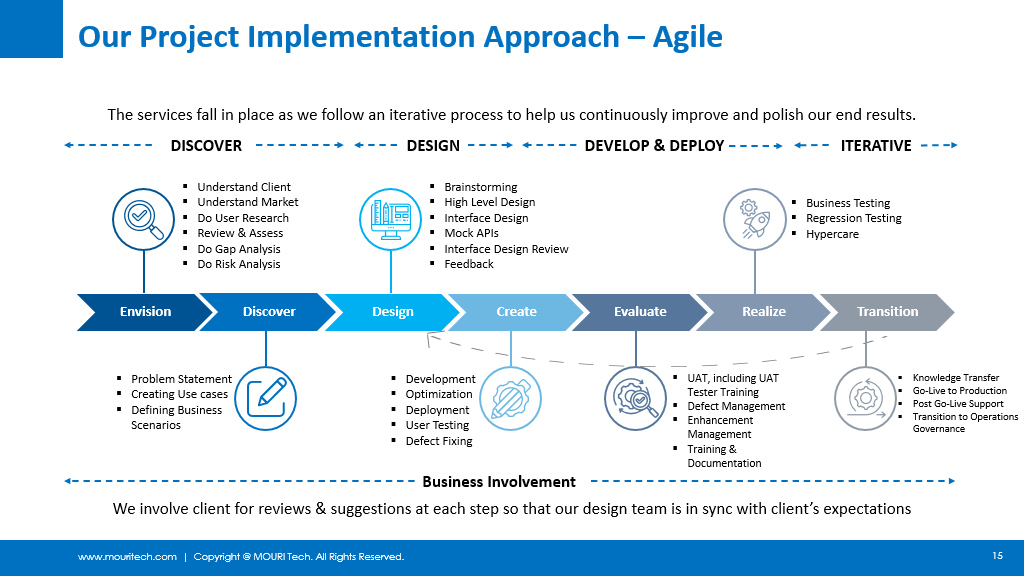Introduction:
In the contemporary, fast-paced business milieu, adept problem-solving is imperative for organizations to not only survive but also to remain competitive. The capacity to promptly identify, analyze, and rectify issues is a vital attribute in achieving success. This article delves into individual realms of problem-solving and stresses on the strategic implementation of effective corrective actions.
Understanding the Foundations of Problem-Solving:
Problem-solving is a pivotal process in organizational decision-making dynamics and employs an array of tools and techniques to ensure optimal outcomes.
Recognizing the nuanced nature of problems is critical; some may be straightforward, necessitating swift resolutions, while others may demand intricate analyses and collaborative efforts. Businesses leverage problem-solving skills to surmount challenges, refine operations, and enhance the quality of products and services. A proactive approach to problem-solving can significantly amplify operational efficiency, productivity, and overall performance.

The Problem-Solving Process:
Identifying the Problem: The inaugural step involves pinpointing the root cause of the issue.
Employing methodologies such as brainstorming, root-cause analysis, and fishbone diagrams facilitates a comprehensive understanding of the problem’s dimensions.
Brainstorming: Here, teams collaboratively generate diverse ideas and potential causes, fostering creativity and leveraging varied perspectives.
Root-cause Analysis: This method involves probing into the issue by repeatedly asking “why” to unveil the underlying causes.
Fishbone Diagrams: These visually represent contributing factors, aiding the identification of potential areas for further investigation.
Analyzing the Problem: Post identification, a thorough analysis is indispensable. Utilizing tools such as Pareto and SWOT analysis, coupled with data gathering and investigation, provides insights for crafting effective corrective actions.
Gathering Data: Collecting relevant information through surveys, interviews, observations, and data analysis establishes a foundation for understanding the problem’s scope.
Conducting Investigations: Delving into causes and effects, through experiments, historical data reviews, and expert consultations enables a comprehensive understanding.
Pareto Analysis: Prioritizing significant causes by focusing on the vital few, as per the 80/20 rule, optimizes resource allocation.
SWOT Analysis: Evaluating strengths, weaknesses, opportunities, and threats related to the problem at hand helps formulate strategies to overcome it.

Developing Corrective Actions:
Following a meticulous problem analysis and creating corrective actions aligned with SMART principles (Specific, Measurable, Attainable, Relevant, and Time-Bound) ensures actionable and realistic solutions. Developing corrective actions is a pivotal phase in the problem-solving process, requiring meticulous planning, strategic thinking, and a commitment to addressing the root causes of identified issues. This phase involves the formulation of a detailed and actionable plan to rectify the problems identified during the initial stages. Here is an elaboration on the key components of developing corrective actions:

“I’ve found that learning to see every scenario as an identifiable problem is the first step towards mastering the important skill of problem resolution.
You run the risk of depending on inaccurate information that is predicated on assumptions if you try to solve the problem too soon.
Consequently, it should come as no surprise that a large number of businesses are currently looking for issue solvers to aid in their decision-making!”
Kathiravan K
Practice Lead-BPS
Outline the Desired Outcomes:
Precision and Clarity: Clearly define the specific outcomes that the organization aims to achieve through the implementation of corrective actions. Precision ensures that there is no ambiguity regarding the intended results.
Alignment with Organizational Goals: Ensure that the outlined outcomes align with the broader goals and objectives of the organization. This alignment ensures that corrective actions contribute to the overall strategic direction.
Devise a Plan of Action:
Strategic Steps: Determine the specific steps and strategies that need to be taken to achieve the desired outcomes. This involves a careful consideration of potential approaches, evaluation of their feasibility, and an assessment of their anticipated effectiveness.
Comprehensive Approach: Consider all possible dimensions of the issue and develop a comprehensive plan that addresses the underlying causes. This may involve changes in processes, procedures, technology, or even organizational culture.
Identify and Allocate Necessary Resources: Identify the resources required for the successful implementation of the corrective actions. This includes financial resources, human capital, technology, and any other relevant resources.
Feasibility Assessment: Verify that the allocated resources are not only sufficient but also appropriate for the specific task at hand. Consider potential constraints or limitations that may affect the availability or utilization of these resources.
Establish Accountability:
Clear Roles and Responsibilities: Assign specific responsibilities and roles to individuals or teams involved in the implementation of corrective actions. This ensures accountability and clarity regarding who is responsible for each aspect of the plan.
Monitoring and Reporting: Implement mechanisms for monitoring progress and reporting. Regular updates on the status of corrective actions help in maintaining transparency and identifying potential issues early on.
Involve Relevant Stakeholders: Input from stakeholders and subject matter experts ensures a holistic approach.
Implementing Corrective Actions: The implementation phase requires careful planning, effective communication, and strong leadership. Strategies involving clear communication channels, employee training programs, and monitoring mechanisms facilitate successful execution.
Clear Communication Channels: Regular updates and prompt addressing of concerns foster transparency and trust among employees.
Employee Training Programs: Equipping the workforce with necessary skills empowers them to contribute effectively.
Monitoring Mechanisms: Establishing systems to track progress allows for timely identification and resolution of challenges.
Resolving Challenges During Implementation:
Despite meticulous planning, challenges may arise. Addressing resistance to change, lack of resources, and unforeseen obstacles promptly ensures the implementation stays on track.
Resistance to Change: Involving employees in decision-making and providing support facilitates smoother transitions.
Lack of Resources: Conducting resource assessments during planning and addressing funding and manpower issues mitigates challenges.
Unforeseen Obstacles: Maintaining flexibility in implementation plans allows for adaptability to unexpected changes.
Monitoring and Evaluating Effectiveness:
Post-implementation, continuous monitoring, and evaluation, guided by key performance indicators (KPIs), are crucial for making data-driven decisions and ensuring sustained success.
Reduced Error Rates: Comparing corrective measures before and after determine the efficacy in enhancing overall quality and efficiency. Implementing corrective actions with the aim of reducing error rates involves a meticulous approach to identify and address the root causes of errors within organizational processes. This might include refining standard operating procedures, implementing advanced quality control measures, or providing additional training for personnel. By embracing technological advancements, organizations can automate certain processes to minimize the risk of human errors. Additionally, fostering a culture of continuous improvement and accountability among team members can contribute to a sustained reduction in error rates.
Improved Customer Satisfaction: Pre- and post-implementation feedback analysis gauges the impact on customer experience.
Enhanced Employee Productivity: Tracking productivity levels before and after determine improvements in efficiency.
Increased Profitability: Financial data analysis establishes impact on the bottom line. The objective of enhancing profitability through corrective actions demands a strategic and comprehensive evaluation of financial processes, cost structures, and revenue streams. Organizations may need to revisit pricing strategies, optimize resource allocation, and identify areas for cost reduction. Implementing efficiency measures, such as streamlining workflows and leveraging technology to improve productivity, can positively impact the bottom line. Moreover, exploring new market opportunities or diversifying product and service offerings could contribute to revenue growth and overall profitability.
Continuous Improvement: Regular assessments and a culture of learning and innovation ensure ongoing success. Employee participation in evaluations taps into collective knowledge, enhancing the effectiveness of corrective actions and promoting overall organizational success.
Market indicators could include:
Financial Performance:
Assessing financial metrics such as revenue growth, profit margins, and Return on Investment in comparison to industry benchmarks provides insights into the organization’s financial health. Consistently outperforming or meeting market standards in these areas signifies effective corrective actions.
Customer Satisfaction and Loyalty:
Monitoring customer feedback, satisfaction scores, and loyalty metrics helps gauge the impact of corrective actions on the customer experience. Organizations should aim to meet or exceed industry standards in customer satisfaction, as satisfied customers are more likely to become loyal advocates for the brand.
Operational Efficiency:
Evaluating operational efficiency through metrics such as cycle time, production yield, and resource utilization is essential. Meeting or surpassing industry benchmarks in these areas indicates that corrective actions have successfully optimized internal processes.
Market Share:
Tracking market share in comparison to industry standards provides insights into the organization’s competitive position. Effective corrective actions should contribute to maintaining or expanding market share relative to industry peers.
Innovation and Adaptability:
Assessing the organization’s ability to innovate and adapt to changing market dynamics is crucial. Comparing innovation metrics and the speed of adapting to industry changes against market standards reflects the organization’s agility and long-term sustainability.
it can be suggested that the success of corrective actions should be measured not only by internal improvements but also by how well the organization aligns with and surpasses market expectations. Regularly evaluating and adjusting strategies considering market indicators ensures that the organization remains competitive and resilient in a dynamic business environment.
Conclusion:
Effectively implementing corrective actions for problem-solving is akin to navigating with a compass in a dynamic business landscape. It not only addresses existing issues but also forestalls their recurrence. Though managing corrective actions across diverse projects poses challenges, strategic approaches outlined in this article can serve as a compass for organizations navigating the intricacies of problem-solving. Thus, it is crucial to gauge the effectiveness of the implemented corrective actions by aligning them with market indicators and benchmarking against industry standards. This involves a systematic evaluation of various key performance indicators (KPIs) to determine how well an organization is performing in comparison to its peers.
Author Bio:
Kathiravan K
Practice Lead-BPS
A seasoned business leader with proven track record in BPS Operations, Transitions and Project & Process Management. Associated with fortune companies in the past, bringing the industry standards to thrive business excellence at MOURI Tech.






